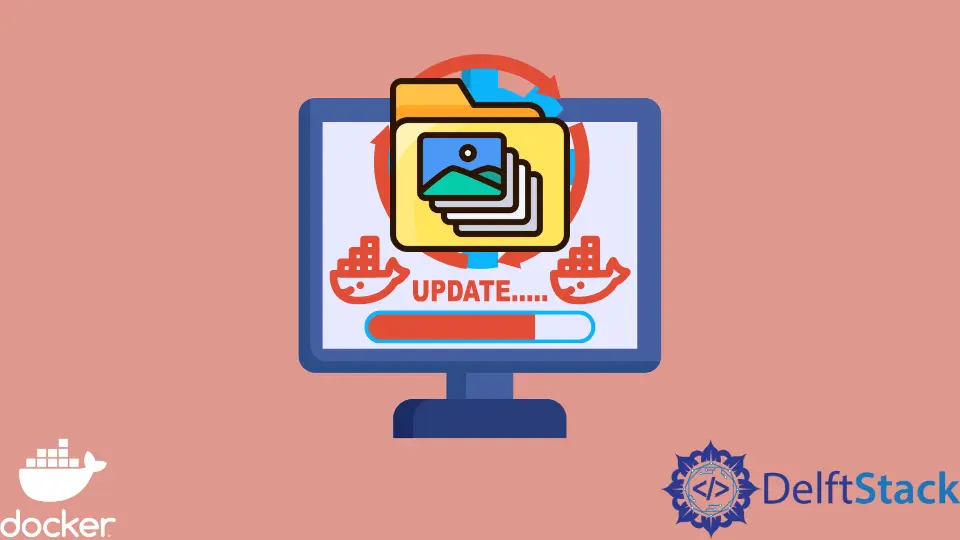How to Update Existing Images With Docker Compose
- Understanding Docker Compose
- Method 1: Using Docker Compose Pull
- Method 2: Rebuilding Images with Docker Compose Build
- Method 3: Using Docker Compose Up with the –build Flag
- Conclusion
- FAQ

Updating existing images with Docker Compose can seem daunting at first, but it doesn’t have to be. Whether you’re a seasoned developer or just starting your journey with Docker, understanding how to manage and update your Docker images is crucial for maintaining a smooth workflow. In this guide, we’ll explore practical methods to update existing images using Docker Compose, focusing on Python as our programming language for automation. By the end of this article, you’ll have the knowledge to keep your images up-to-date efficiently, ensuring your applications run smoothly and securely.
Understanding Docker Compose
Before diving into the methods for updating images, it’s essential to understand what Docker Compose is. Docker Compose is a tool that allows you to define and run multi-container Docker applications. With a simple YAML file, you can configure your application’s services, networks, and volumes, making it easier to manage complex applications. Knowing how to update images is vital because it helps you leverage the latest features, security patches, and performance improvements.
Method 1: Using Docker Compose Pull
One of the simplest ways to update existing images is by using the docker-compose pull command. This command pulls the latest versions of the images specified in your docker-compose.yml file. Here’s how you can do it using Python:
import os
os.system("docker-compose pull")
This Python script executes the docker-compose pull command in the terminal, ensuring that all the images defined in your Docker Compose file are updated to their latest versions.
When you run this script, Docker Compose checks the remote repository for any updates to the images you are using. If a newer version is available, it downloads the updated image to your local machine. This method is efficient for keeping your images current without manually checking for updates.
Output:
Pulling my_service_name ... done
This output confirms that the images have been successfully pulled. Using docker-compose pull is particularly useful when you want to ensure your application is running with the latest features and security updates without having to rebuild your images manually.
Method 2: Rebuilding Images with Docker Compose Build
Another effective way to update existing images is by rebuilding them using the docker-compose build command. This method is particularly useful when you have made changes to the Dockerfile or any dependencies. Here’s how to do it with Python:
import os
os.system("docker-compose build")
This command instructs Docker Compose to rebuild the images defined in your docker-compose.yml file. It checks for any changes in the Dockerfile and dependencies and rebuilds the images accordingly.
When you run this script, Docker Compose will go through each service and rebuild the images from scratch. This is essential when you want to ensure that your images reflect the latest code and dependencies.
Output:
Building my_service_name
Step 1/5 : FROM python:3.9
---> 123456789abc
Step 2/5 : COPY . /app
---> Using cache
The output provides a detailed log of the build process, showing which steps were executed and whether any cached layers were used. This method is particularly beneficial when you are actively developing your application and need to ensure that your images are up-to-date with your latest code changes.
Method 3: Using Docker Compose Up with the –build Flag
If you want to update your images and start your containers in one go, using the docker-compose up command with the --build flag is the way to go. This method not only updates your images but also ensures that your containers are running the latest versions. Here’s a Python example:
import os
os.system("docker-compose up --build")
This command tells Docker Compose to build images before starting the containers. It’s a convenient way to ensure that you’re running the latest images without needing to run multiple commands.
When you execute this script, Docker Compose will first check if the images need to be rebuilt based on the changes in your Dockerfile or dependencies. If updates are required, it will rebuild the images and then start the containers.
Output:
Building my_service_name
Step 1/5 : FROM python:3.9
---> 123456789abc
Starting my_service_name ... done
The output shows the build process followed by the startup of your containers. This method is particularly useful in a development environment where you frequently make changes and want to see the results immediately.
Conclusion
Updating existing images with Docker Compose is a straightforward process that can significantly enhance your development workflow. By utilizing methods like docker-compose pull, docker-compose build, and docker-compose up --build, you can ensure that your applications are running on the latest images. These techniques not only save you time but also help maintain the security and performance of your applications. With the knowledge you’ve gained from this article, you can confidently manage your Docker images and keep your applications running smoothly.
FAQ
-
how often should I update my Docker images?
It’s best to update your Docker images regularly, especially when security patches or new features are released. -
can I automate the image update process?
Yes, you can automate the process using CI/CD pipelines or scheduled scripts to run the update commands. -
what happens if I update an image that my container relies on?
If you update an image, you may need to rebuild your containers to ensure they use the latest version of the image. -
is it necessary to rebuild images every time I update?
Not always. You can usedocker-compose pullto update without rebuilding, but rebuilding is essential if you change the Dockerfile. -
how do I check the current version of my Docker images?
You can use the commanddocker imagesto list all your images along with their tags and versions.
Marion specializes in anything Microsoft-related and always tries to work and apply code in an IT infrastructure.
LinkedIn